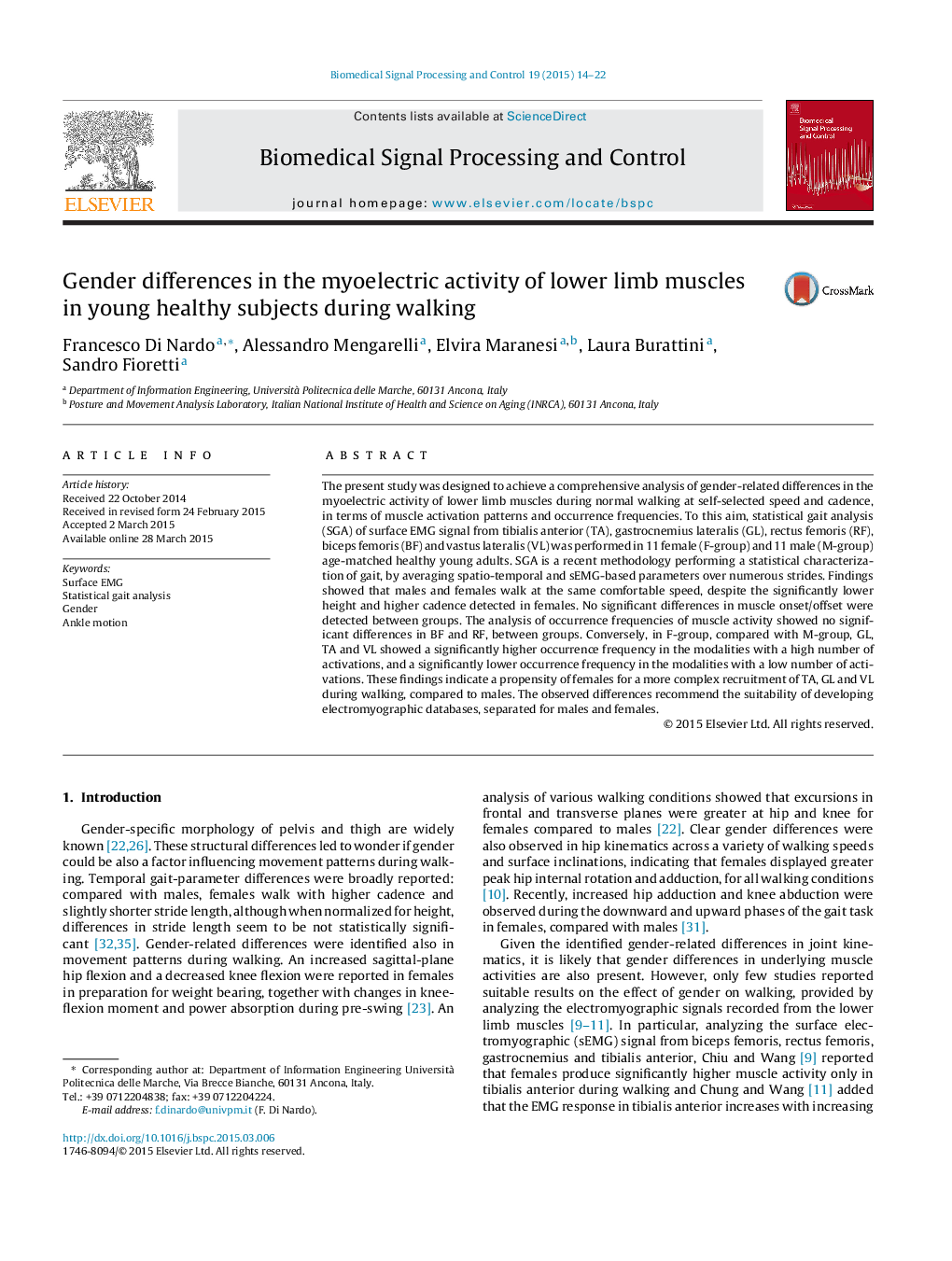| Article ID | Journal | Published Year | Pages | File Type |
|---|---|---|---|---|
| 558082 | Biomedical Signal Processing and Control | 2015 | 9 Pages |
•Rectus and biceps femoris sEMG activity shows no gender differences during walking.•Gastrocnemius, tibialis anterior and vastus show gender-dependent sEMG activity.•Differences are found in frequency of occurrence rather than in activation pattern.•Females reveal a propensity for a more complex recruitment of GL, TA and VL.•Suitability of developing sEMG databases separated for males and females is suggested.
The present study was designed to achieve a comprehensive analysis of gender-related differences in the myoelectric activity of lower limb muscles during normal walking at self-selected speed and cadence, in terms of muscle activation patterns and occurrence frequencies. To this aim, statistical gait analysis (SGA) of surface EMG signal from tibialis anterior (TA), gastrocnemius lateralis (GL), rectus femoris (RF), biceps femoris (BF) and vastus lateralis (VL) was performed in 11 female (F-group) and 11 male (M-group) age-matched healthy young adults. SGA is a recent methodology performing a statistical characterization of gait, by averaging spatio-temporal and sEMG-based parameters over numerous strides. Findings showed that males and females walk at the same comfortable speed, despite the significantly lower height and higher cadence detected in females. No significant differences in muscle onset/offset were detected between groups. The analysis of occurrence frequencies of muscle activity showed no significant differences in BF and RF, between groups. Conversely, in F-group, compared with M-group, GL, TA and VL showed a significantly higher occurrence frequency in the modalities with a high number of activations, and a significantly lower occurrence frequency in the modalities with a low number of activations. These findings indicate a propensity of females for a more complex recruitment of TA, GL and VL during walking, compared to males. The observed differences recommend the suitability of developing electromyographic databases, separated for males and females.
